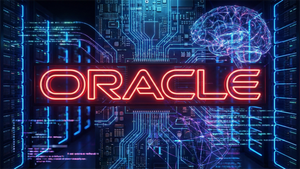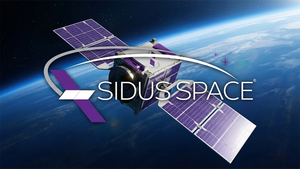
Toy and entertainment company Hasbro (NASDAQ: HAS) reported Q1 CY2025 results exceeding the market’s revenue expectations, with sales up 17.1% year on year to $887.1 million. Its non-GAAP profit of $1.04 per share was 54.7% above analysts’ consensus estimates.
Is now the time to buy HAS? Find out in our full research report (it’s free).
Hasbro (HAS) Q1 CY2025 Highlights:
- Revenue: $887.1 million vs analyst estimates of $773 million (17.1% year-on-year growth, 14.8% beat)
- Adjusted EPS: $1.04 vs analyst estimates of $0.67 (54.7% beat)
- Adjusted EBITDA: $274.3 million vs analyst estimates of $201.1 million (30.9% margin, 36.4% beat)
- Operating Margin: 19.2%, up from 15.3% in the same quarter last year
- Free Cash Flow Margin: 11.6%, down from 17.4% in the same quarter last year
- Market Capitalization: $8.62 billion
StockStory’s Take
Hasbro’s first quarter results were defined by a 17% increase in sales, led by robust momentum in its Wizards of the Coast segment and digital licensing activity. Management attributed the revenue gains to the popularity of Magic: The Gathering releases and the sustained performance of digital games like Monopoly Go. Cost discipline and favorable business mix also supported operating margin expansion, with CEO Chris Cocks noting, “Our games portfolio, an industry-leading licensing business, remained standout performers. High growth, high margin, and structurally resilient due to lower exposure to international sourcing.”
Looking ahead, Hasbro’s guidance reflects both optimism and caution. Management maintained its outlook for the year but highlighted the potential impact of elevated tariffs on imports from China and other manufacturing hubs. CFO and COO Gina Goetter emphasized the company’s proactive mitigation efforts, such as accelerating supply chain diversification and operational cost savings, but acknowledged that “the expanded rate on imports from China, and potential reciprocal tariffs on other toy manufacturing hubs including Vietnam and India, is creating volatility and introducing a range of scenarios for how the year could unfold.”
Key Insights from Management’s Remarks
Hasbro’s leadership focused on the strategic levers behind its outperformance in Q1 and the shifting macro environment.
-
Games Segment Growth: The Wizards of the Coast business, including Magic: The Gathering, powered revenue growth, with new releases and expanded player engagement cited as key drivers. Management highlighted a 45% sales increase in Magic and strong backlist performance.
-
Digital Licensing Expansion: The company’s digital portfolio, notably Monopoly Go, delivered significant growth and announced new third-party collaborations, such as an upcoming Star Wars event in the game. Digital licensing was called out as structurally resilient due to minimal exposure to international tariffs.
-
Cost Transformation Progress: Hasbro’s operational excellence program produced $22 million in gross cost savings for the quarter. Management credited disciplined SKU rationalization and lower promotional activity for margin gains, particularly in the consumer products segment.
-
Tariff Mitigation Strategies: Executives detailed accelerated efforts to reduce reliance on China for U.S. toy and game production, targeting a drop below 40% of U.S. volume by 2026. The company is shifting manufacturing to additional countries and adjusting logistics to offset tariff exposure.
-
Licensing Partnerships Extended: Hasbro announced the extension of its multi-decade licensing agreement with Disney for Marvel and Star Wars products, broadening category rights and reinforcing the company’s access to high-demand entertainment brands.
Drivers of Future Performance
Hasbro’s outlook for the year is shaped by continued games and licensing momentum, offset by uncertainty related to global trade policy and input costs.
-
Tariff and Supply Chain Uncertainty: Management warned that ongoing or increased tariffs could create further cost headwinds, impacting both consumer products revenue and profit margins. The company is accelerating supply chain diversification to reduce exposure, but acknowledges these efforts may introduce added complexity and transitional costs.
-
Games and Digital Strength: Hasbro’s upgraded expectations for Wizards of the Coast reflect strong demand for upcoming Magic: The Gathering releases and a growing player base, providing a buffer against weakness in traditional toys.
-
Product and Pricing Flexibility: The company is focused on maintaining key consumer price points ($9.99 and $19.99) through targeted pricing, SKU rationalization, and close collaboration with retail partners to retain shelf space and market share. Management is modeling a range of consumer demand scenarios to remain agile as market conditions evolve.
Top Analyst Questions
-
Christian Carlino (JPMorgan): Asked about Hasbro’s assumptions if the 145% China tariff rate persists and how this would affect toy spending. Management described modeling scenarios based on prior recessions and pandemic impacts, expecting the toy category to remain more resilient than other discretionary sectors.
-
Megan Clapp (Morgan Stanley): Sought clarification on whether prolonged tariffs would create additional headwinds in 2026 and if supply chain diversification could offset these costs. Executives confirmed ongoing efforts to accelerate diversification and acknowledged that higher costs may persist into next year.
-
James Hardiman (Citi): Questioned if the company’s unchanged outlook is based on worst-case trade policy scenarios and what would drive upside. Management explained the guidance assumes high tariffs and macro weakness, and that any improvement in trade conditions could provide financial upside.
-
Arpiné Kocharyan (UBS): Asked about the pace of reducing China exposure in the supply chain and the relative impact of cost savings versus pricing actions. Management stated they are targeting below 40% China exposure by 2026, utilizing a mix of supply chain shifts, SKU rationalization, and commercial adjustments.
-
Eric Handler (ROTH Capital): Inquired about the drivers behind Magic: The Gathering’s outperformance and the feasibility of moving manufacturing out of China before peak holiday demand. Management cited expanded player base and strong backlist sales for Magic, and said most supply chain changes would be more impactful in 2026.
Catalysts in Upcoming Quarters
In the coming quarters, the StockStory team will monitor (1) execution on supply chain diversification and the pace at which Hasbro reduces its China manufacturing exposure, (2) the resilience and growth trajectory of the Wizards of the Coast and digital licensing segments, and (3) the evolving impact of tariffs and the company’s ability to maintain key consumer price points without eroding margins. Updates on new or extended licensing partnerships and progress in operational cost savings will also be important indicators.
Hasbro currently trades at a forward P/E ratio of 14.7×. At this valuation, is it a buy or sell post earnings? See for yourself in our free research report.
Our Favorite Stocks Right Now
Market indices reached historic highs following Donald Trump’s presidential victory in November 2024, but the outlook for 2025 is clouded by new trade policies that could impact business confidence and growth.
While this has caused many investors to adopt a "fearful" wait-and-see approach, we’re leaning into our best ideas that can grow regardless of the political or macroeconomic climate. Take advantage of Mr. Market by checking out our Top 6 Stocks for this week. This is a curated list of our High Quality stocks that have generated a market-beating return of 176% over the last five years.
Stocks that made our list in 2020 include now familiar names such as Nvidia (+1,545% between March 2020 and March 2025) as well as under-the-radar businesses like the once-small-cap company Exlservice (+354% five-year return). Find your next big winner with StockStory today.





